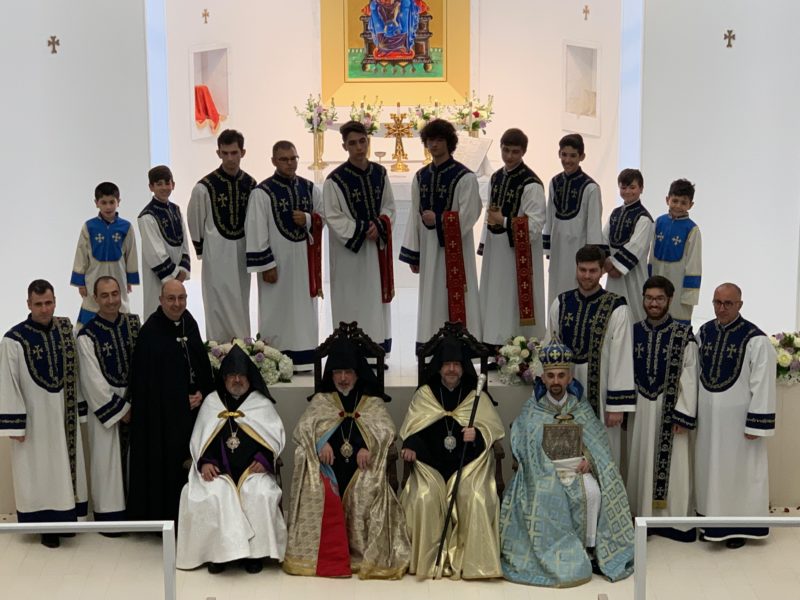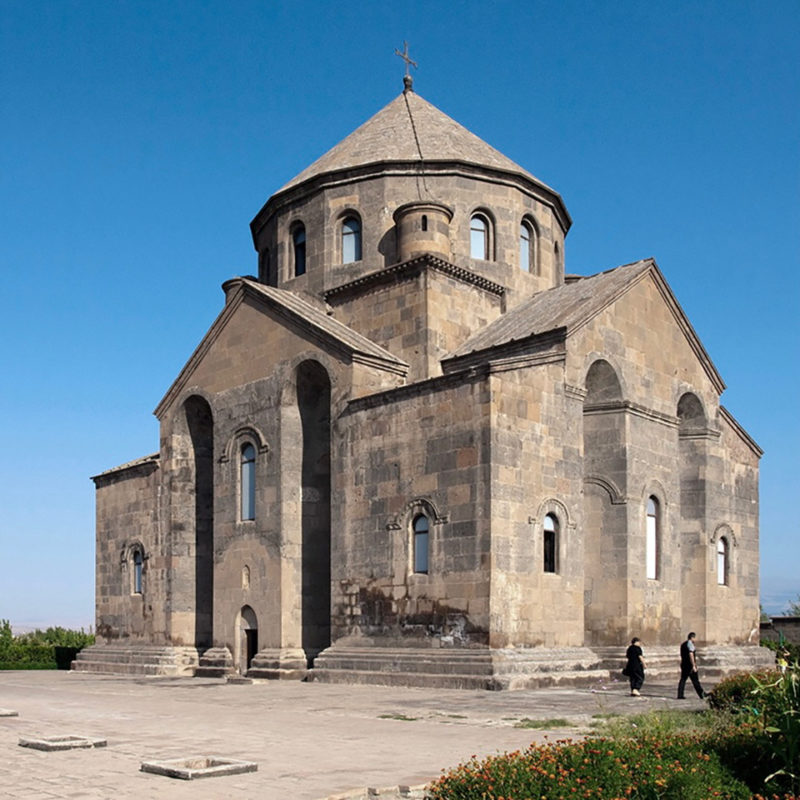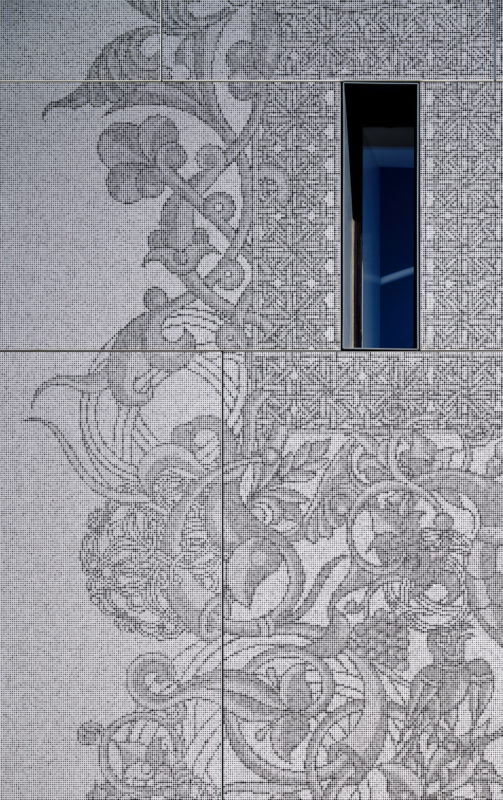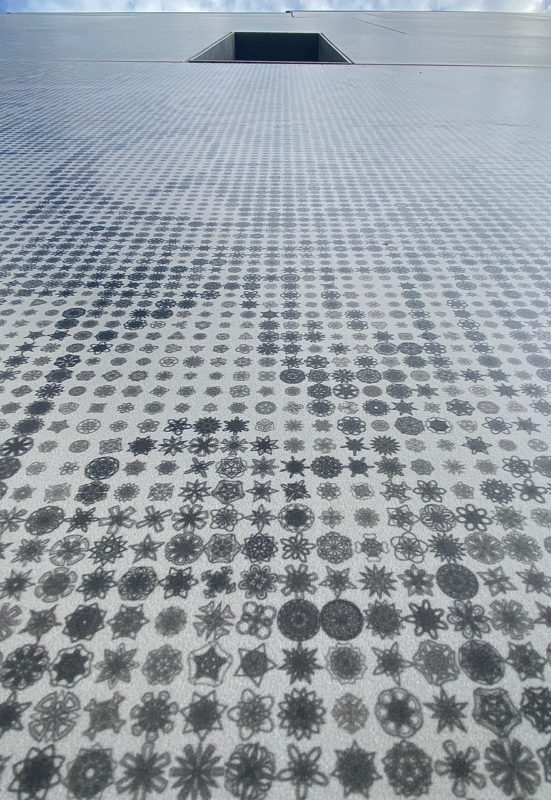By Marla Sarokhanian and Mihran Aroian
Special to the Mirror-Spectator
DALLAS, Tex. — Armenians from across the state of Texas converged at the consecration of Saint Sarkis Armenian Church in Carrollton, near Dallas, this past weekend. The newly constructed church was inspired by the seventh-century St. Hripsime Church in Echmiadzin, with a modern façade etched with 1.5 million unique pixels representing the Holy Martyrs of the Armenian Genocide.
The consecration events began on Friday evening, April 22, followed by the consecration led by Bishop Daniel Findikyan on Saturday. St. Sarkis hosted a sold-out banquet Saturday evening in the newly constructed banquet hall with a fabulous dinner and live Armenian entertainment. Present for the consecration was our Primate, Bishop Daniel Findikyan, Archbishop Vicken Aykazian, Archbishop Haigazoun Najarian, and Archbishop Khajag Barsamian along with Rev. Fr. Ghevond Ajamian, pastor of St. Sarkis. It was a very moving and spiritual experience for all who attended.

On a beautiful 4.5 acre setting, we are creating a space for worship and celebration of our ancient heritage inspired by our Christian faith, historical experience, and cultural traditions. The architecture is one that embraces the traditional but interprets it in a modern way. The church structure is meant to be both a sanctuary where we practice our Christian faith, and a monument, reminding us of our ancestors who sacrificed for the very faith we practice today.

This new church is iconic, unmistakably Armenian, and unlike any other in the world. A team of architects led by David Hotson, a distinguished architect living in New York, worked with Ani Sahakyan, an architecture designer, living in Armenia, and others, including our own local Stepan Terzyan, a member of this church, to design the façade. The church employs state-of-the-art materials and digitally driven design and fabrication processes to extend the cultural legacy of Armenia into the present day. Contemporary materials and technologies include double-curved, glass-fiber-reinforced concrete light coves that illuminate the interior, digitally modelled and fabricated glass-fiber-reinforced gypsum vaults that shape the interior space, and computer-numerical-controlled shallow relief carvings that cover the church entry doors.

The entry from the western façade of the Church extends this use of emerging technologies further by using a computer script to generate 1.5 million individual pixelated icons, printed in Italy on porcelain panels at high resolution, creating a powerful memorial to the one-and-a-half million victims of the Armenian Genocide. The icons are composed of a special UV-resistant ink applied to individual panels. No two icons are the same. Optical figures, of different scales, are seen uniquely at different distances. Just as no two humans are alike, but when placed together, they form something greater than themselves – they form a cross.
When the icons are observed at a distance, the dominating view is that of the Tree of Life and its outward-curving arms, that terminate in two points from an Armenian cross. Its design is based on Armenian tradition and many symbols including peacocks, grapes, birds, wheat, etc., are represented; some hanging on the cross, and others intertwined therein. When you are inches away from the wall, you will notice that each icon is very small – only 3/8” each, in fact. Yet, when you realize that each one is representing one martyr, the impact is profound. When we walk through the doors into the sanctuary, we become a part of something much greater as we join with the saints. Upon leaving, we must remember that we cannot live in the past, and we must spread the gospel of Christ to others.


At the foot of the cross are the eight-panel entry doors. They too tell a story. The intricate carvings, developed with the guidance of Bishop Daniel Findikyan, tell the story of our Badarak (Divine Liturgy), which takes us through the Word of God and reenacts the Last Supper to prepare and receive communion. Thus, the Holy Bible icon on the left, the Last Supper depicted in the middle, and the Communion Chalice on the right. The Last Supper depiction was taken from an old Armenian manuscript, and is uniquely Armenian, stylistically and in its iconography. Through these doors, we enter the sanctuary. There are designated areas for lighting candles and for solitary prayers to be said.

In the Church of Saint Sarkis, the masonry architecture of St. Hripsime, which is made of solid stone, has been reinterpreted as a system of indirect lighting coves which admit natural light to illuminate the interior sanctuary. The strong Texas sunlight is reflected through openings sculpted into the exterior which allow only indirect light to reach the interior. Both the curvilinear light coves on the exterior and the curvilinear plaster vaults on the interior were created using contemporary, digitally designed, glass-fiber-reinforced concrete, and gypsum materials. The light fills these vaults above the congregation, bringing illumination to the congregational seating area. Natural light is brought down to ground level at the baptismal font, the secondary altars, and the votive altars at the corners of the sanctuary where candles are lit, and prayers are offered. Indirect natural light is focused most intensely on the main altar which is raised six steps above the main sanctuary floor in accordance with Armenian tradition. There is no visible overhead lighting.

The church has a state-of-the-art heating and cooling system, and the vents are placed out of view under the pews. The sanctuary is kept at the same temperature throughout. There is a loft where the organ is located and where the choir will lift their voices, singing the traditional sharagans (hymns).

We are hoping that the architecture of this beautiful building will attract many visitors from around the Dallas-Fort Worth area as well as people from every state and country. For more on the architecture, go here. To learn more about St. Sarkis, please visit www.stsarkis.org.

The post St. Sarkis Armenian Church Consecrated in Dallas appeared first on The Armenian Mirror-Spectator.







